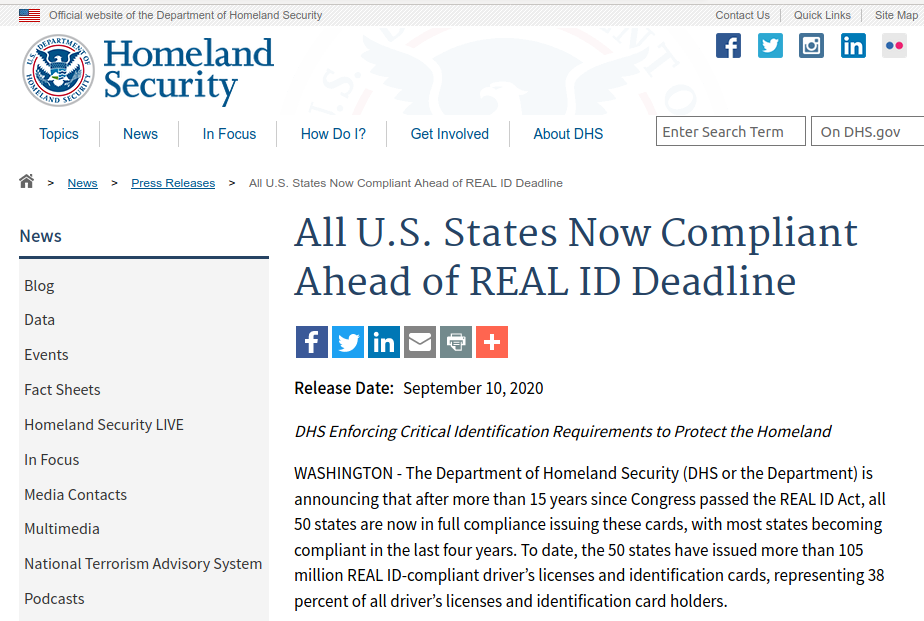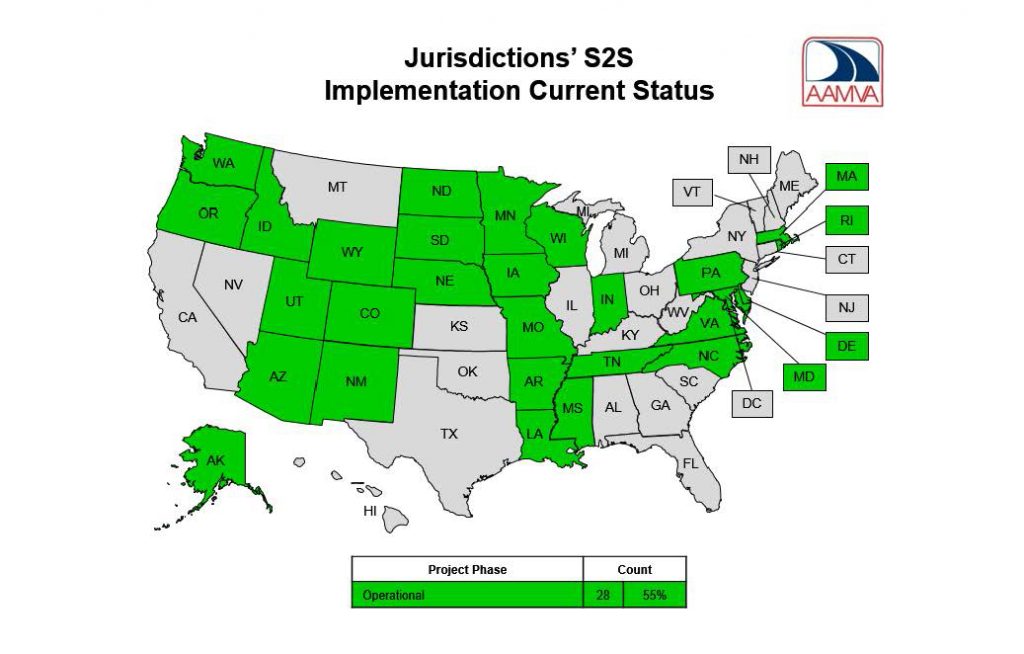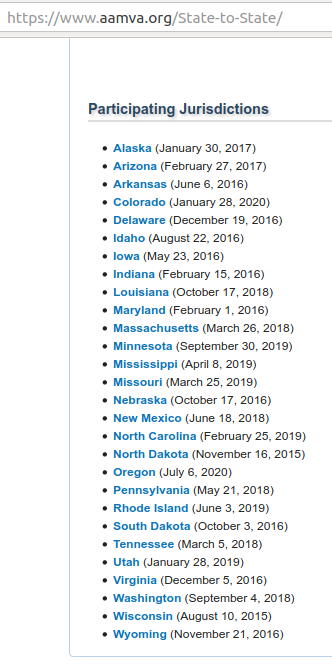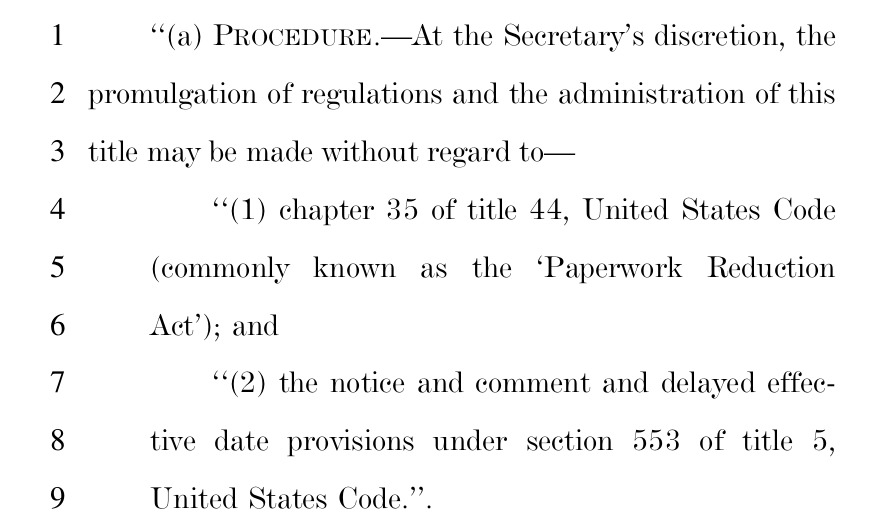What does REAL-ID Act “enforcement” really mean?
For the last fifteen years, as both Republican and Democratic administrations have come and gone, the US Department of Homeland Security (DHS) has been using the threat of “enforcement” of the REAL-ID Act of 2005 to extort state legislators, governors, and driver licensing agencies into complying with the REAL-ID Act of 2005 and uploading their residents’ drivers license and state-issued ID card data to the national REAL-ID database, “SPEXS”.
The threat has been that the DHS and/or its components (such as the Transportation Security Agency) will harass or turn away residents of noncompliant states when they try to pass through TSA or other Federal checkpoints or enter Federal facilities.
Not wanting to provoke riots or protests at airports, the DHS has repeatedly postponed its arbitrarily self-imposed “deadlines” for REAL-ID enforcement at TSA checkpoints, most recently until October 1, 2021. And the TSA, despite repeated trial balloons suggesting what new rules it might try to adopt to require ID to fly, has not yet tried to finalize such a rule. So we don’t really know what, if anything, REAL-ID Act enforcement at airports might mean.
However, the REAL-ID Act has supposedly been being enforced for access to some other Federal facilities for more than five years, starting on October 15, 2015.
We’ve been trying for almost that long to find out what that “enforcement” has really meant, so that we and the public can assess the meaning and impact of the DHS threats.
How many people have been turned away for lack of acceptable or compliant ID, or ID issued by a “compliant” state, when they tried to enter Federal facilities? At what types of facilities has this happened? And for what purposes were these people seeking entry?



